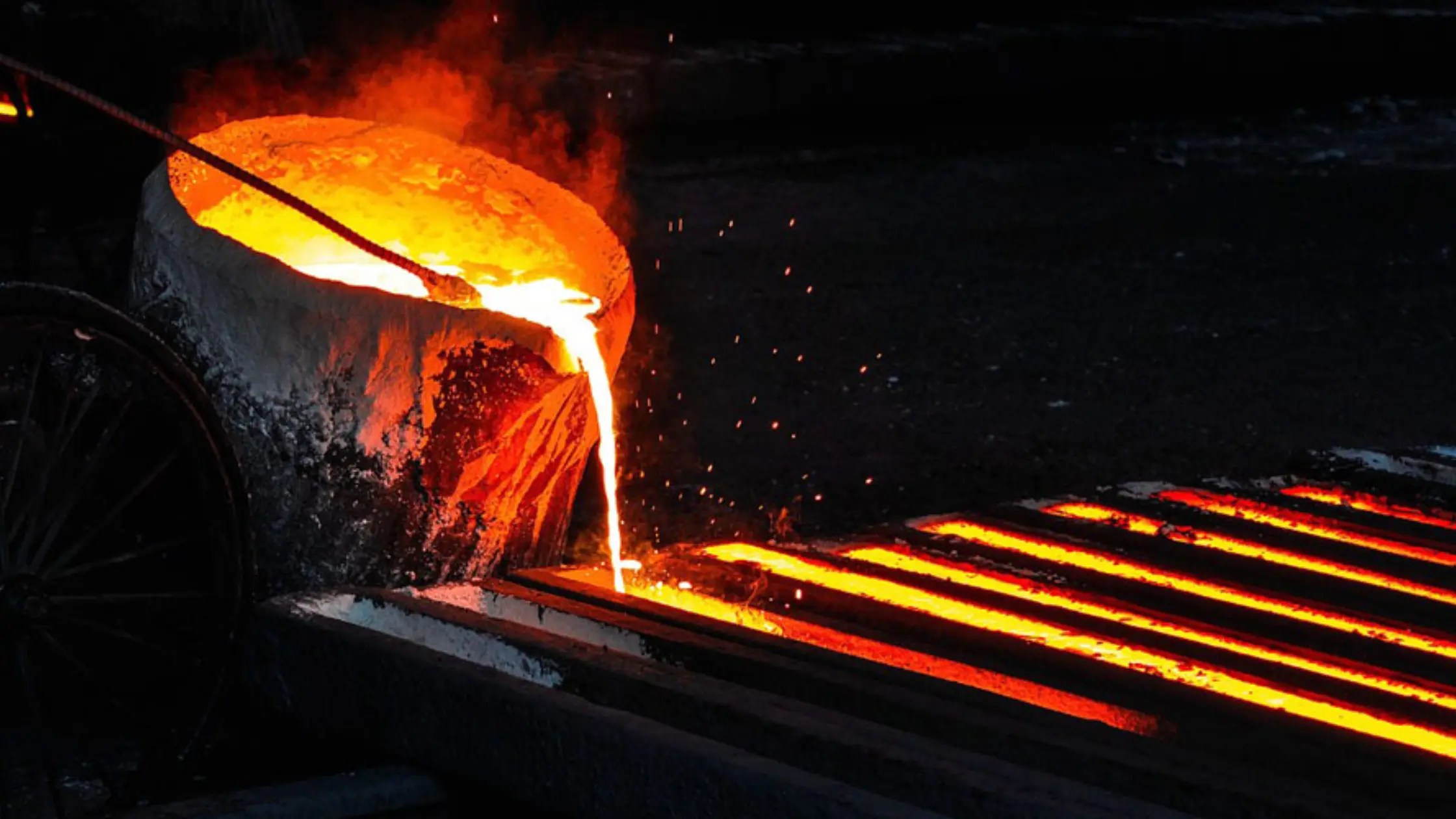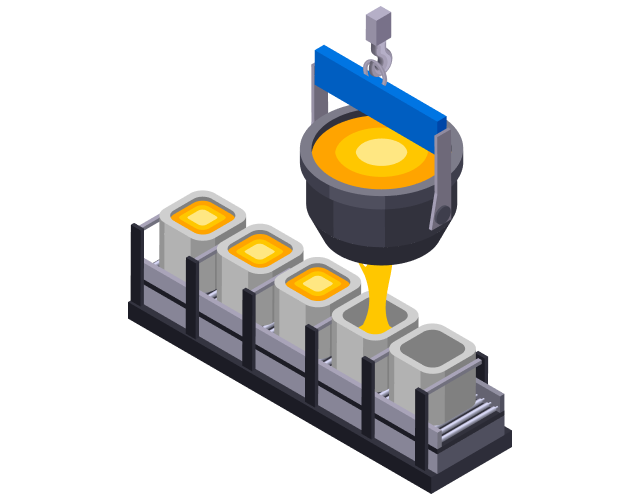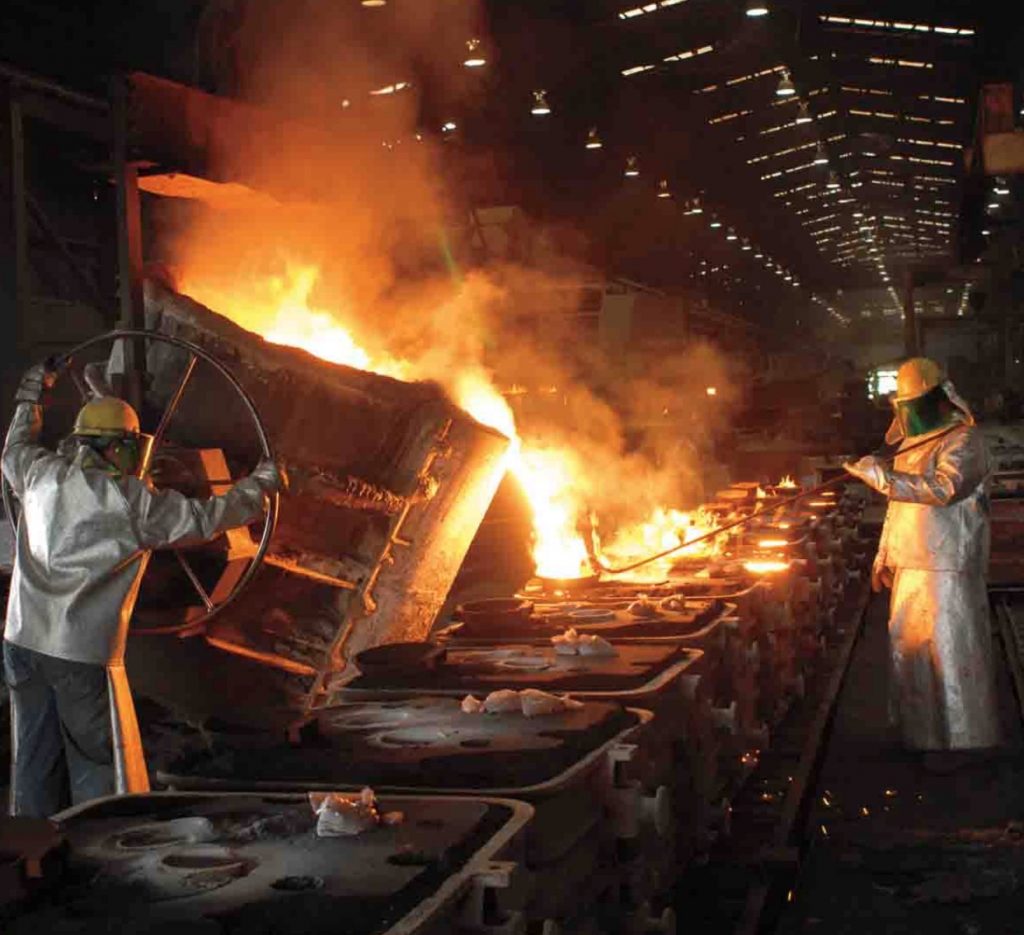Understanding the Steel Castings Process: A Comprehensive Guide for Beginners
The Metal Casting procedure is a fundamental technique in making that transforms molten metal into solid kinds. Novices have to understand the different approaches included, such as sand spreading and die spreading. Recognizing the materials, design concepts, and safety and security measures is equally essential. Each aspect plays a vital role in achieving effective end results. As one browses these details, the question of exactly how to maximize each step for improved results comes to be progressively significant.
The Basics of Metal Casting
Metal Casting has actually evolved over centuries, its fundamental concepts continue to be constant and indispensable to the manufacturing procedure. At its core, Metal Casting entails the improvement of liquified metal into strong things with different strategies. The process starts with the production of a mold, which defines the form of the end product. When the mold is prepared, metal is heated to its melting factor and poured right into the dental caries. After cooling down, the steel solidifies, taking the shape of the mold and mildew.
There are several casting techniques, consisting of sand spreading, investment casting, and pass away casting, each with one-of-a-kind benefits and applications. The selection of technique depends upon aspects such as manufacturing quantity, material kind, and wanted precision. When cast, the final item may undertake additional processes like machining or surface therapy to attain the required coating and specs. Recognizing these fundamentals is vital for anyone curious about the area of Metal Casting.

Understanding Materials Made Use Of in Metal Casting
Materials play a necessary duty in the Metal Casting procedure, affecting the final item's residential or commercial properties and efficiency. Various steels are made use of, including light weight aluminum, steel, iron, and bronze, each offering unique qualities matched for details applications. Aluminum is lightweight and corrosion-resistant, making it optimal for automotive parts. Iron, especially cast iron, is favored for its superb wear resistance and resilience. Steel supplies high toughness and adaptability, commonly made use of in hefty equipment elements. Bronze, known for its deterioration resistance and machinability, is generally employed in aquatic applications.
In enhancement to the steels, numerous casting products, such as sand, plaster, and ceramic, are used to produce molds. Sand spreading, one of the most widespread technique, utilizes silica sand because of its thermal stability and capability to develop complex shapes. Plaster and ceramic mold and mildews provide finer details however may require even more intricate processes. The choice of products straight influences the effectiveness, price, and quality of the spreading operation.
The Layout Process: From Principle to Plan
The design procedure in Metal Casting starts with the initial idea growth, where ideas are produced and evaluated. This is followed by the application of CAD modeling strategies, enabling for accurate visualizations of the design. The blueprint finalization steps ensure that all specs are accurately documented for manufacturing.
First Idea Development
Initial principle development marks an essential stage in the Metal Casting process, where concepts transform right into tangible designs. During this stage, designers work together with designers and stakeholders to brainstorm and refine initial concepts. They think about elements such as performance, aesthetic appeals, and manufacturability, guaranteeing that the style meets the needed requirements and efficiency standards. Illustrations and outlines are produced to imagine the ideas, enabling for preliminary assessments of feasibility and cost-effectiveness. This stage additionally includes recognizing materials and prospective casting methods that line up with the style goals. Inevitably, preliminary idea development prepares for a thorough blueprint, directing the succeeding phases of the spreading procedure and making certain a successful shift from concept to fact.
CAD Modeling Techniques
Changing principles right into precise designs, CAD modeling techniques play a pivotal role in the Metal Casting procedure. These strategies utilize sophisticated software to create in-depth three-dimensional versions that properly reflect the desired product. By employing devices such as parametric modeling, solid modeling, and surface area modeling, designers can adjust dimensions and forms easily. CAD systems likewise facilitate simulation and analysis, permitting the recognition of potential flaws prior to manufacturing begins. This proactive method minimizes material waste and optimizes the style for manufacturability. Additionally, CAD versions can be easily modified, allowing quick iterations based upon comments. Fundamentally, CAD modeling acts as the foundation of the design procedure, connecting the gap between preliminary principles and the eventual production-ready layouts.
Plan Completion Tips
Complying with the creation of comprehensive CAD designs, the next stage includes plan finalization, which is essential in equating electronic designs into workable prepare for manufacturing. This process starts with reviewing the CAD models for precision and compliance with specifications. When verified, the dimensions, resistances, and product specs are thoroughly detailed to guarantee clarity. Incorporating notes and annotations assists communicate crucial details relating to spreading processes, surface area coatings, and assembly demands. The completed blueprint goes through a strenuous approval process, frequently including cooperation with designers and production teams to address any type of prospective issues. Modifications are made and approvals gotten, the plan is formally launched, offering as the fundamental file for the succeeding stages of Metal Casting, including pattern production and mold and mildew layout.
The Steel Casting Techniques Clarified

Metal Casting strategies incorporate a selection of techniques utilized to shape molten metal into desired types. These strategies vary according to the sort of product, complexity of the style, and manufacturing quantity. Sand spreading is just one of the most usual techniques, involving the production of a mold and mildew from sand to hold the molten metal. Investment spreading, or lost-wax casting, enables complex styles by utilizing a wax pattern that is dissolved. Pass away casting employs high-pressure injection of liquified metal right into a mold, appropriate for automation. Various other techniques include long-term mold and mildew spreading, which utilizes recyclable mold and mildews, and centrifugal casting, where rotational forces assist in loading the mold and mildew. Each strategy has its benefits and applications, making it crucial for manufacturers to pick the appropriate technique based on their specific demands and requirements. Comprehending these techniques is crucial for anybody associated with the Metal Casting process.
Finishing Processes: Enhancing Your Casted Product

Ending up processes play a crucial function in improving the quality and look of casted items. Numerous surface therapy methods, such as polishing and coating, are utilized to improve longevity and aesthetics. In addition, top quality examination techniques assure that the end product satisfies specified standards and efficiency demands.
Surface Area Treatment Methods
A variety of surface therapy strategies play a vital role in improving the quality and durability of casted items. These techniques include methods such as shot blasting, brightening, and coating. Shot blowing up effectively removes surface blemishes, boosting the aesthetic and practical characteristics of the casting. Sprucing up provides a smooth surface, which is particularly vital for attractive applications and components needing marginal friction. Coating techniques, such as electroplating or powder layer, deal added security against rust and wear, ensuring resilience. Surface therapies can boost adhesion for subsequent processes, such as paint or bonding. By employing these techniques, makers can achieve superior surface area top quality, which is critical for the performance and lifespan of Metal Casting in numerous applications.
Top Quality Examination Techniques
Effective top quality evaluation methods are vital for assuring the honesty and efficiency of casted items after the ending up processes. Various techniques are employed to analyze the high quality of Metal Casting, including aesthetic assessment, dimensional checks, and non-destructive testing (NDT) Aesthetic examination permits for the recognition of surface issues, while dimensional checks assure that items meet defined tolerances. NDT methods, such as ultrasonic screening and radiographic inspection, supply deeper understandings into internal stability without harming the spreadings. In addition, mechanical screening, such as tensile and firmness examinations, evaluates material properties - Wisconsin Aluminum Foundry. By utilizing useful reference a mix of these techniques, producers can improve item quality and reliability, inevitably bring about greater customer complete satisfaction and reduced manufacturing costs
Security Considerations in Metal Casting
While the Metal Casting procedure offers various advantages, it also provides a variety of security risks that should be carefully taken care of. Workers in casting facilities are revealed to high temperatures, liquified steels, and dangerous materials, which can result in severe injuries if proper precautions are not taken. Individual safety devices (PPE) such as heat-resistant gloves, face shields, and protective clothes is vital to reduce dangers.
In addition, the presence of fumes and dust demands correct air flow systems to assure air quality - Wisconsin Aluminum Foundry. Normal training on safety and security procedures is essential for all workers to recognize potential hazards and react successfully. Emergency treatments should be developed, consisting of fire safety and security actions and first help availability. Upkeep of tools and proper handling of products even more add to a safer working atmosphere. By focusing on these security considerations, Metal Casting operations can secure their labor force and keep efficient production procedures
Regularly Asked Concerns
What Are the Ecological Effects of Metal Casting?
Metal Casting can bring about ecological impacts such as air and water air pollution, source deficiency, and power intake. Furthermore, incorrect waste monitoring and discharges from shops add to ecological disturbances and health dangers for neighboring areas.
Just how Do I Pick the Right Metal for Spreading?
To choose the appropriate metal for casting, one need to consider variables such as mechanical residential properties, rust resistance, thermal conductivity, and expense. Evaluating the designated application and ecological conditions is necessary for suitable choice.
What Are the Common Issues in Metal Casting?
Common flaws in Metal Casting include directory porosity, contraction, sand incorporation, and misruns. These concerns typically develop from improper product choice, poor layout, or imperfections in the casting procedure, influencing the end product's quality and performance.
Exactly How Can I Boost My Steel Casting Abilities?
To boost Metal Casting abilities, one need to practice continually, research casting strategies, examine previous tasks for defects, look for comments from skilled wheels, and continuously trying out different materials and methods to improve efficiency and understanding.
What Is the Expense of Starting a Metal Spreading Organization?
Beginning a metal casting company usually calls for a preliminary investment of $5,000 to $50,000, depending on devices, products, and center prices. Elements like location and scale can greatly affect general start-up costs.
The Metal Casting procedure is a fundamental strategy in check this making that changes molten steel right into solid forms. Newbies should understand the numerous methods involved, such as sand spreading and die casting. There are several casting methods, including sand spreading, investment casting, and die spreading, each with special advantages and applications. Financial investment casting, or lost-wax spreading, permits for detailed designs by making use of a wax pattern that is melted away. Other approaches include irreversible mold and mildew spreading, which uses reusable mold and mildews, and centrifugal spreading, where rotational forces aid in filling up the mold and mildew.